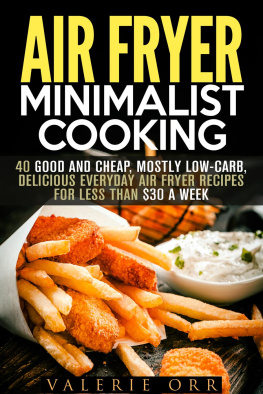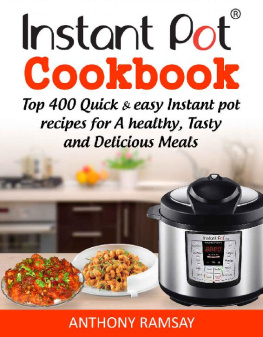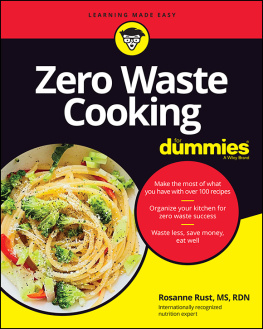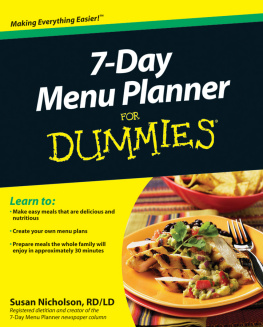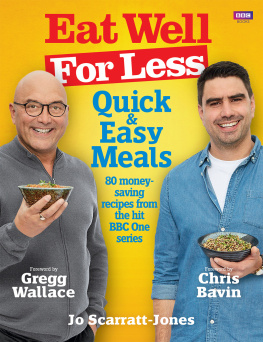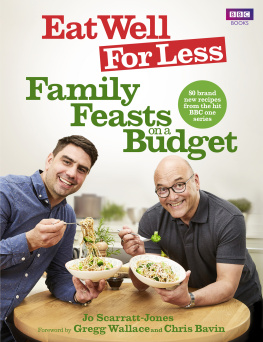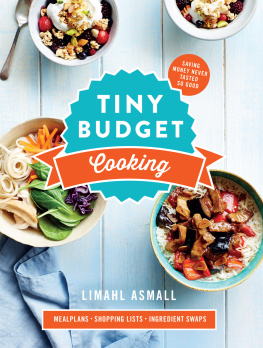Do you find it difficult to budget for your weekly shop? Are you tempted by impulse buys and special deals? Do you make the same meals week in, week out? Eat Well for Less shows you how to create more nutritious dishes for your family while spending less on your supermarket shop.
As well as 80 delicious recipes, you will find a meal-planning guide, help on freezing and storing food, a family budget planner and lots of ideas to get kids cooking. Learn how to use your leftovers, make savvy swaps and add more fruit and veg to your diet without spending extra time in the kitchen. With tasty food, sample shopping lists and practical tips from Gregg, Chris and the experts from the hit BBC show, this is your essential guide to eating well for less.
They say you shouldnt judge a book by its cover, well this might be the exception, because this book will do exactly what it says on the cover! We want to show you how you can save money on your food bill without compromising on quality or enjoyment and this book is full of tasty, simple recipes that will do just that. As we travel around the country making the series, we realise that none of the issues are unique. We all waste food, dont always make lists, are reluctant to try cheaper alternatives and spend far too much money on things we dont need to. We want to help you to change, and hope this book will inspire you to start making those simple changes that, in the long run, will mean the savings really add up.
If you received your food bill once a year, youd be horrified and would do everything in your power to reduce it. But as were making lots of small purchases, the total value doesnt really register. So one of the most important things you can do is shop around not just by visiting high street grocers, fishmongers and butchers who are a great source of information as well as often great value for money but also shop around within the supermarket. Dont automatically pick up your usual brand week after week, try different ones. And if you dont like it, try a different one the week later. Open your eyes and challenge your tastebuds! Be aware that sometimes you really are just paying for fancy packaging or convenience and that it doesnt necessarily mean that its better, healthier or tastierjust more expensive!
One easy thing you need to do when looking to reduce your bill, is PLAN. Follow these simple rules below and youre well on your way to eating well for less.
How to Eat Well for Less?
Sit down with the family and plan what you want to eat for the following week. Its really important that you do this together, as that way youll all be happy!
Once youve got your meal plan, write a shopping list of what youll need to make those meals.
With your list in hand, go to your cupboards, fridge and freezer and cross off whatever ingredients you already have.
Now youll have a list with only the things you need to buy. Stick to it! Youll not only save money, youll also reduce your waste.
Cooking from scratch can be daunting, either because you feel you dont have the confidence or the time. We hope this book will show you that cooking simple meals can be quick and easy and something you might even enjoy doing together as a family. And as an added bonus youll be saving money too!
Gregg and Chris
Tips and techniques
If youre new to cooking and feeling a bit nervous, here are a few tips to get you started.
Read the recipe before you start and get everything you need in front of you. Theres nothing worse than having your hands covered in food and trying to dig out a teaspoon. If you are missing an ingredient, see if its something you can easily substitute with something you do have.
Remember to defrost any frozen ingredients in good time particularly meat, chicken or fish. Vegetables will defrost quickly during cooking. Remove any butter, eggs, etc. from the fridge to soften or warm up to room temperature if the recipe recommends it.
If the recipe tells you to preheat the oven at the beginning, turn it on now. Grease and line any tins at the start, too.
Wash your hands, put on a pinny, tie back long hair and make sure your work surface and equipment are clean. Its basic hygiene but its so important with food preparation.
Get stuck in!
Follow the recipe carefully particularly if you are baking.
Check the instructions on the packaging. For example, if it asks you to rinse rice before cooking, put it in a sieve and set it under cold running water. For rice, pasta, noodles, etc., check the cooking time it can vary.
Wash knives, other utensils and your chopping boards if they have been used for raw meat, poultry, fish, eggs or vegetables or better still, have a few colour-coded boards for each ingredient to prevent any cross-contamination.
Keep raw and cooked foods separate during preparation to prevent the spread of bacteria.
Dont wash raw meat, chicken or fish, but do wash fruit and vegetables.
How do you know if its cooked?
Undercooking in particular is a worry, but equally you dont want your hard work to go to waste by overcooking food.
Pasta
Cook until al dente if you scoop out a piece of pasta it should be just firm to the bite, not chewy and definitely not soggy.
Chicken
When roasting a whole bird, pierce the thigh of the chicken with a sharp knife slide the knife in, then out again. Any juices coming out should be clear and the tip of the knife should be very hot. If not, return to the oven for another 5 minutes and check again. For chicken breasts or drumsticks, cut into the thickest part of the meat and see if there is any pink meat; if there is, it needs cooking longer.
Meat
For roasts, arm yourself with a meat thermometer the food should be 70C in the middle when it is ready. Pork, burgers and sausages should all be cooked through until there is no pink meat, but it is ok to eat beef and lamb rare if you like it that way.
Fish
The flesh should flake away and be opaque all the way through.
Other foods
Any other foods should be hot in the middle when ready.
Clearing up
Clear up as much as you can as you go along and then you wont be faced with a mess when youve finished eating.
If there are any leftovers, cool them as quickly as possible at room temperature (ideally within 1 to 2 hours), then store in the fridge or freeze for another day. Remember, when you reheat the food make sure it is steaming hot all the way through, and dont reheat it more than once. Particular instructions are relevant to reheating rice see .
If you are storing food, use plastic freezerproof containers. Dont use aluminium to store food as it is highly acidic and will affect the flavour of the foods. If you have only used half a tin of an ingredient, tip out the remainder into another container to store.
Glossary of cooking terms
Beat: Stir rapidly to make a mixture smooth using a whisk, spoon or mixer.
Blanch: Cook vegetables or fruit briefly in boiling water to seal in flavour and colour to prepare for freezing or to make removing skin easier.
Blend: To thoroughly combine 2 or more ingredients, either by hand with a whisk or spoon, or with a mixer.


